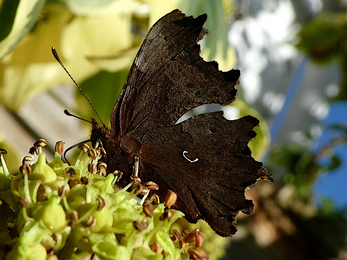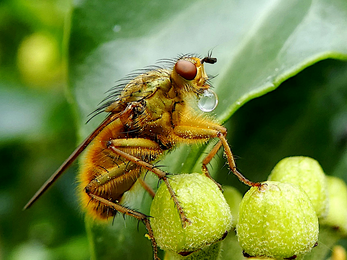Over the next few weeks many insect species will be starting to prepare for the challenges of winter. The adults of some species die off in late summer or autumn, having deposited eggs in a suitable habitat to ensure a new generation next spring. Other species seem to be at their peak, or at least more noticeable as wild food sources decline and they turn their attention to gardens with ivy, heather and other late-flowering plants.
It’s a good time to spot the red and green Hawthorn Shieldbug (Acanthosoma haemorrhoidale). This large, elongated bug has an angular shape and pointed ‘shoulders’, and although superficially similar to the Birch Shieldbug (Elasmostethus interstinctus), the latter has a softer shape and subtly different markings. A large reddish-brown oval bug with a rough, mottled texture and flared abdomen is likely to be the Dock Bug (Coreus marginatus), which can be found on vegetation throughout the year. These all overwinter as adults in sheltered locations and emerge in the spring to mate.




